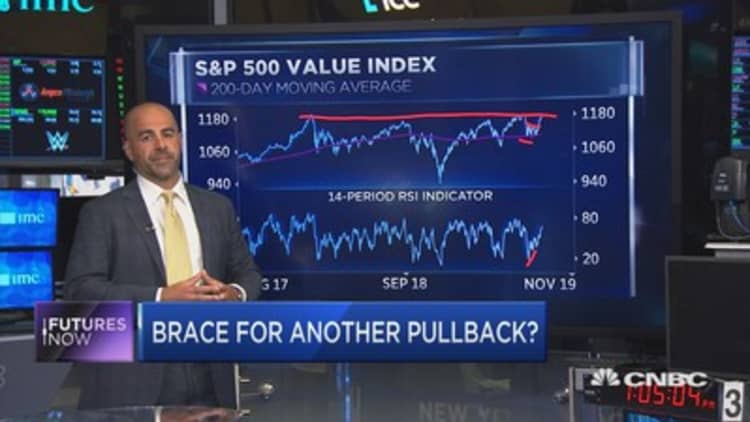
J.P. Morgan Chase's Jason Hunter says stocks won't stage a sustainable rally until two things happen: A U.S.-China trade deal and cyclicals regain leadership.
The firm's head of global fixed income and U.S. equity technical strategy built his case in two charts.
First, Hunter focused on the S&P 500's key levels to watch.
"We've been in a very tight range through the month of August here where the market broke out just recently above 2,940, 2,950. On a near-term basis, a definite step in the right direction," he told CNBC's "Futures Now" on Tuesday.
However, Hunter called its sector leadership into question.
"If you look underneath the covers at how the rotation is taking place from sector and style perspective, it's moved from cyclically sensitive groups into more defensive-oriented stocks," Hunter said.
He blames the defensives' popularity on fear generated by negative U.S-China trade war developments.
"It's very much a trade story. So, we're going headline by headline," Hunter said. "This is a purely headline driven, trade driven type of rotation."
His second chart focuses on the S&P 500 Value Index. Hunter notes the index, which includes several financial and energy stocks, began picking up momentum over the past few weeks on better-than-expected trade headlines after a challenging few months.
"A lot of the markets that are more closely correlated with global data, particularly global PMI data, carry heavy weights in this index," he noted. "What we saw through the month of August, as the market traded off, what you saw was less and less downside momentum as the market tested the 200-day moving average for this particular index. And, just like the broader S&P 500, value also broke to the upside."
Yet, Hunter won't sound the all clear unless there's an actual U.S.-China trade deal.
"Once the trade headlines started to turn a bit more negative in May, we suggested reducing broad index exposure in the U.S. and going into a cash heavy position," Hunter said. "We were more than happy to come back into risk, but that required cyclically sensitive groups like this particular index to start to perform better."
That's necessary, added Hunter, for the bull market to see a late-cycle rally extension. But until there's an actual trade deal, he warns stocks face serious pullback risks, and he's staying nimble.
On Tuesday, the S&P 500 closed at 2,979, 1.6% below its all-time high of 3,027 hit on July 26.



